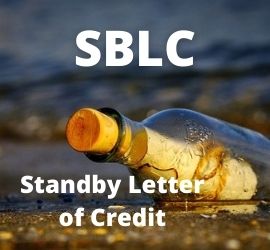What Is a Utility Patent?
 A utility patent covers the development of new or improved products, processes, or equipment preventing others from using them without a license or permission. A utility patent is often known as a patent for innovation. It prevents others from creating, using, or selling the invention without permission. When most people talk about patents, they’re usually talking about utility patents.
A utility patent covers the development of new or improved products, processes, or equipment preventing others from using them without a license or permission. A utility patent is often known as a patent for innovation. It prevents others from creating, using, or selling the invention without permission. When most people talk about patents, they’re usually talking about utility patents.
Utility patent applications are filed in order to protect innovative new or improved inventions, systems, and other beneficial ideas. A utility patent is one of the most valuable types of intellectual property, yet it is not free. The expense of obtaining a utility patent might be quite significant. Utility patents for basic ideas can cost a few thousand dollars. However, complicated technology might cost tens of thousands of dollars.
At its core, a utility patent is a contract you enter into with the government. You gain a monopoly in return for sharing how your innovation works with the public in the form of a patent. Importantly, the monopoly does not grant the owner the right to utilize or manufacture the innovation. You have the right to prevent others from utilizing your idea for a specific number of years – currently 20. However, after that time period expires, anybody may freely exploit your idea.
Utility Patent – A Closer Look
A utility patent is a valuable asset. It grants an innovator exclusive economic rights to create and sell cutting-edge technologies. Nevertheless, obtaining a utility patent can be challenging. The filing procedure may be time-consuming and costly. Further, the complexity may make them difficult to write and understand. Utility patents encompass the development of a new or improved product, method, or machine. To that effect, they provide the inventor exclusive economic rights to sell or license the concept for 20 years. However, the patent holder may be required to pay maintenance costs during that time. Individuals can utilize the USPTO’s patent search service to see if a patent has already been issued for an idea they have. Once an invention receives a utility patent, the creator has the right to prevent others from producing, using, or selling their innovation.
Whoever invents or discovers any new and useful process, machine, manufacture, or composition of matter, or any new and useful improvement thereof, may obtain a patent therefore, subject to the conditions and requirements of this title. (Source: law.cornell.edu)
How to Apply for a Utility Patent
Of course, the first step is to have a unique, useful concept that is patentable. Many believe the second step is to hire a patent attorney or agent. A professional can help an innovator navigate the complicated utility patent filing procedure. Hiring a technical artist to create patent drawings might be the next step. When all of the elements have been assembled, a filing application can be made. Filing fees can range from a few thousand dollars to tens of thousands of dollars, depending on the intricacy of the invention. A utility patent applicant must submit an application to the United States Patent and Trademark Office (USPTO).
When you visit the USPTO website, you will notice two categories of applications. Namely, provisional patent applications and non-provisional patent applications. If you haven’t quite finished creating your idea yet, a provisional patent application will come in handy. A provisional patent is valid for one year and bans anybody else from using the invention or discovery during that period. A non-provisional patent application for a utility patent initiates the process. This is where the USPTO determines whether or not your discovery or invention is patentable.
Patents are instructional documents. The government offers inventors rights to their creations in exchange for telling the public how to utilize them. A utility patent application must meet a number of formal conditions. It is divided into parts, each with its own formatting standards. Drawings or diagrams are required to show how your idea works. These rules assist to guarantee that the general public understands how to use your innovation.
Utility Patent vs. Other Patents
A utility patent-protected object may also receive a design patent. This protects its distinctive aesthetic components and needs simply drawings of a design supported by a limited description. Design patents are valid for 14 to 15 years from the date of filing and can be obtained independently. However, in order to obtain both a utility patent and a design patent, the innovation must not only be decorative. It must also be useful and serve some practical function. A plant patent is the third form of patent available. It is obtained by someone who has found or developed a new variety of plants. A plant or biological patent is valid for 20 years from the date of filing and there are no maintenance expenses. Plant patents are far less in number than utility or design patents.
Design & Plant Patents
- Design patent – A design patent protects an article’s original aesthetic look, such as its configuration, form, and surface ornamentation. For example, round, cylindrical, the pattern of indents, ridges, and so on. A design patent exclusively covers an article’s outward aesthetic appearance. A design patent application cannot be submitted for a hidden or internal design of an object. This is because concealed designs cannot be decorative in nature because they are not visible. Similarly, functioning mechanical constructions are not attractive in nature and so are not patentable.
- Plant Patent– It is granted for a new and distinct, invented, or discovered asexually reproduced plant. It includes cultivated mutants, hybrids, and newly discovered seedlings, other than a tuber propagated plant or a plant discovered in an uncultivated state. A plant patent allows the owner to prevent others from making, using, or selling the plant. The patent is effective for a period of up to twenty years from the date of patent application filing. Plant patents do not need maintenance fees to be paid.
Utility Patent Use in the Video Gaming Industry
The gaming business relies heavily on intellectual property (IP). At its core, a video game is a collection of intellectual property rights. This is a fact whether you work for an industry titan or are just getting started as an independent game creator. Everyone should have a fundamental awareness of what these rights are, how they might affect your business, and how you can lose those rights.
When determining whether a utility patent is appropriate for an innovation, game creators should assess if the underlying technique or software solves a specific problem that has afflicted the industry as a whole. Patents are acceptable for inventions that solve substantial industrial issues. Especially, if keeping them secret will be impractical. These advancements may have uses beyond the present generation of games, making a patent potentially valuable for the duration of its life.
Notable past examples of utility patents granted in the video game industry include the globally recognizable D-Pad as well as the “Crazy Taxi” arrow that points players in the direction that they must navigate in a simulated world. More recent examples include patents covering augmented or virtual reality, such as U.S. Patent No. 9,063,330, assigned (at the time this whitepaper published) to Facebook. This patent is directed towards technology related to tracking the position of the user’s head in the Oculus line of VR headsets. (Source: finnegan.com)
Frequently Asked Questions
How Long Does a Utility Patent Last?
A utility patent in the United States is typically awarded for 20 years from the date the patent application is submitted. Determining the term of a patent can be tricky if you have more than one patent filing date. Also, any patent owner should be aware that there are periodic fees. These must be paid in order to retain the patent’s enforceability.
How much does a utility patent cost?
The cost of obtaining a utility patent varies greatly because it is determined by a number of factors. For example, the application’s complexity, attorney and paralegal fees, and the number of claims in the application. Other factors include the number of pages in the application, extensions of time obtained at the USPTO for responding to Office Actions during prosecution, and so on.
What is utility patent infringement?
To successfully prosecute for patent infringement, a patent owner must demonstrate in court that the other party is creating, using, proposing to sell, or selling the patented invention in the United States. Or, importing any patented invention into the United States without authorization within the patent period. Patent infringement is determined on a claim by claim basis. In order to establish infringement, it is not necessary to demonstrate that all claims in the patent are being violated.
What is the likelihood of a utility patent rejection by the Patent Office?
Utility applications are rejected at a far greater rate than other types of applications – approx. 80-90 percent. In contrast, design submissions are frequently granted a first action permit. Ultimately, this means they are authorized without any rejections. This is partly due to differences in the two types of patents themselves. Claims in a design application are largely visual and have a narrower reach. However, claims in a utility application are textual and have a greater scope. Broader claims are more likely to be rejected than previous art that discloses the claimed subject matter.
Up Next: What Is “Sell in May and Go Away”?
 Sell in May and go away refers to the historical observation that the six-month period from November to April outperforms May through October. As a result, some traders subscribe to the technique of selling their stock investments in May, taking a summer vacation, and then re-entering the market in November. Historical data supports the theory of underperformance of particular equities during the summer six-month period beginning in May and ending in October.
Sell in May and go away refers to the historical observation that the six-month period from November to April outperforms May through October. As a result, some traders subscribe to the technique of selling their stock investments in May, taking a summer vacation, and then re-entering the market in November. Historical data supports the theory of underperformance of particular equities during the summer six-month period beginning in May and ending in October.
Traditionally better market performance is observed in the winter six-month period beginning in November and ending in April. To follow this strategy, an investor would sell their equities holdings in May or late spring and reinvest in November or mid-autumn. Some investors believe that this technique is more profitable than being invested in the equity markets throughout the year. In theory, as the weather warms, lower volumes and a lack of market participants might lead to thinner trading. In turn, there is potentially more volatility and greater risk.




